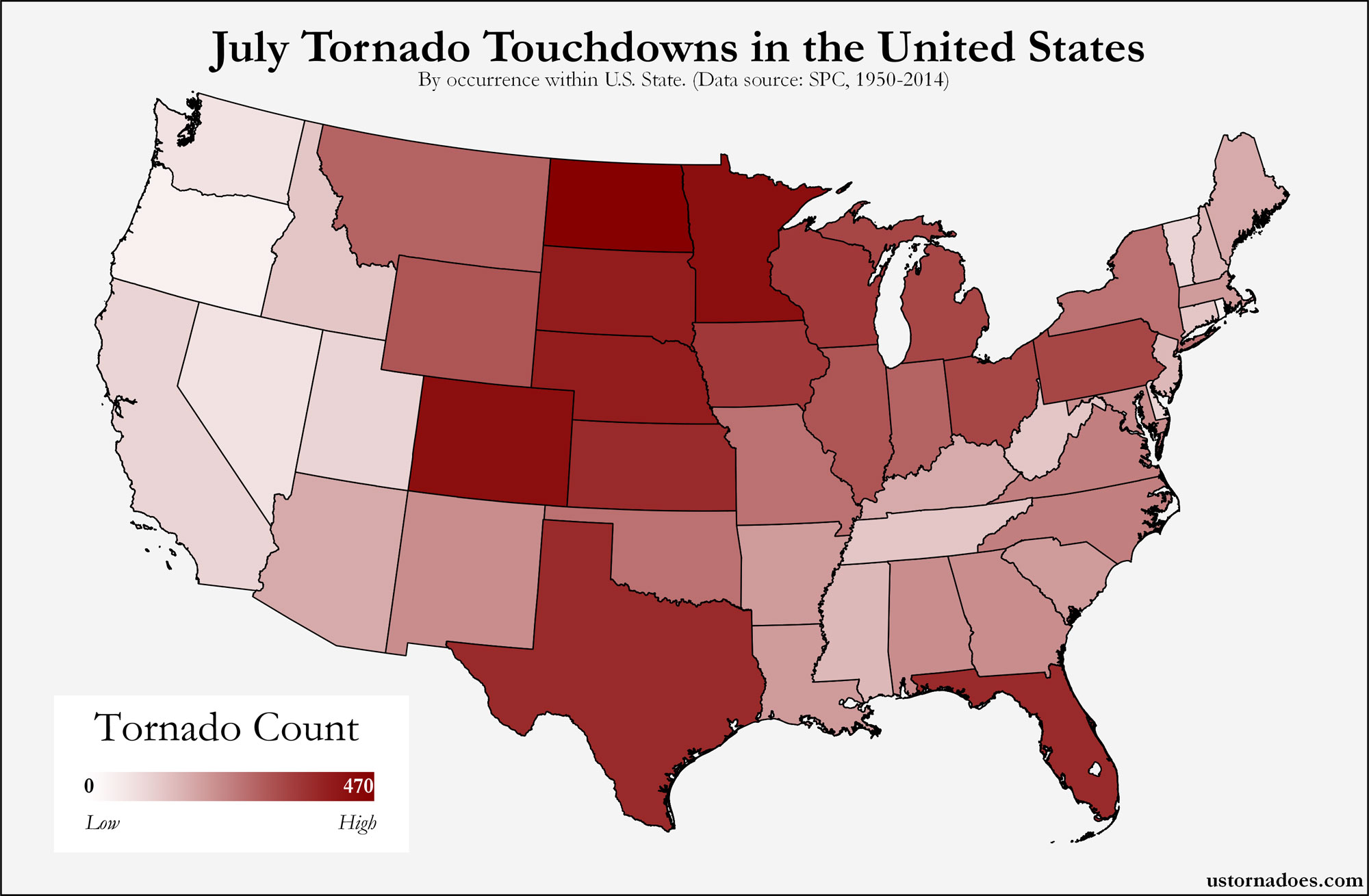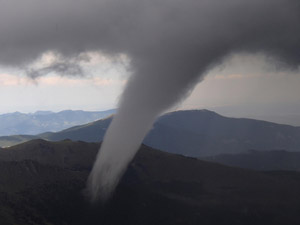
July 2012 has ended with a historically low tornado count. As such, the quiet peak tornado season of 2012 fully comes to a close. While most tornado chasers may consider April-June the peak — since tornadoes tend to be more concentrated in those months — July also rises well above the other eight months of the year in overall numbers as well as days with tornadoes touching down.
From early March through mid-April, 2012 appeared to be picking up where 2011 left off. Then the pace of tornado activity slowed markedly, before ultimately coming to a near halt through the rest of spring and the first half of summer. Even with an above average April, the entire April through July period will finish as one of the least productive for tornadoes in the United States since records began in the 1950s.
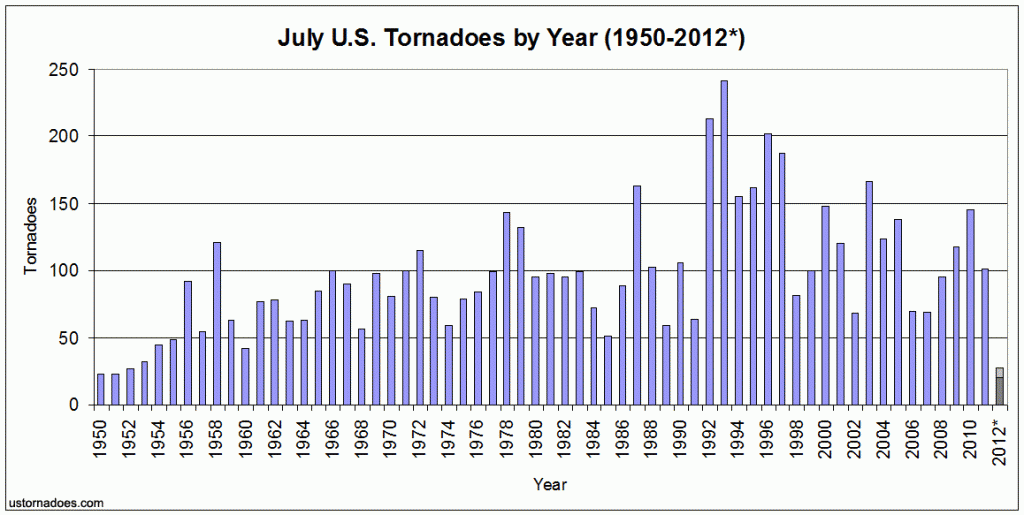
Before going too far, I want to mention I’m using non-inflation adjusted numbers throughout this post, which means many of the oldest counts are in fact higher than the record indicates. In some ways, that makes the level of tornadic activity even more peculiar in 2012. Simply, today’s 20 something tornadoes in a month is perhaps as few as half as many as the previous low July when missed tornadoes are considered. In an inflation adjusted count, this July was as dead as it gets for tornadoes.
My present estimate is that between 20 and 28 tornadoes will end up confirmed for the month of July. I say estimate, because even with confirmed tornadoes, the numerical finalizing process will take months and official records won’t be publicly posted until early 2013. While reports are factored in on some best guess ranges, I am not making a direct comparison, but only indicating that’s the theoretical max in any month.
Regardless, the range of 20 to 28 tornadoes for July hugs what is on the books as the least on record for the month even without adjustments to earlier years. It not only closely resembles a number of years which were certainly under-counted (1950, 23; 1951, 23; 1952, 27; 1953, 32; 1960, 42) but also finishes far below more recent times (1985, 51; 1989, 59; 2002, 68) which were noted for their tornado futility in July.
Alone, a super-quiet July is perhaps just a notable trivia factoid. This year, it’s part of a story of a season that wasn’t for a number of spots, and a season that was majorly lacking in most other tornado zones.
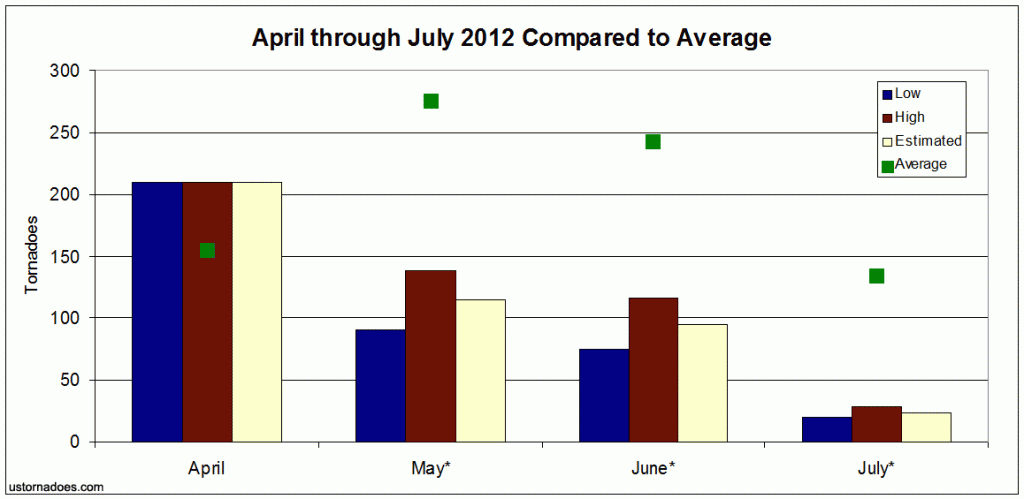
As of posting, only April tornadoes have been posted in non-LSR format to the SPC web site.
For the purpose here, numbers known and estimated are close enough to reality even though they may have slight edits. Using NCDC reports issued for May and June, I’ve estimated a best guess for monthly tornadoes using a range of expected values. The same has been done for July, through a standard reduction factor of raw reports as well as taking into account known tornadoes where possible.
This leaves us with 210 tornadoes, as posted by SPC, for April. In May, the expectation is for around 115 confirmations (from a range of 90 to 139). For June, I expect confirmed tornadoes to end up around 95 (from a low of 75 to a high of 116). When it comes to July, as noted above, the final number should be about 24. (note: Since initial early-a.m. publish time, SPC has put up a preliminary tornado report number of 24 for the month. That makes me tend to believe the final will be lower than 24, and closer to 20, but we’ll have to wait and see).
Using 1991-2010 climatological norms, April was about 135 percent of normal for tornado touchdowns and May came in with roughly 40 percent of normal. A similarly quiet June followed that up, with again around 40 percent of normal. Finally, this July appears to have managed just a tiny 20 percent of the normal tornadoes.
When grouping the peak period of April-July, the United States averages 806 tornadoes per year. Looking at just May-July, the average falls to 681 tornadoes. Using these as benchmarks, 2012’s totals ran roughly 48-60% percent of normal for all four months. When examining just the May-July period, that number drops to a scant 26-40% normal.
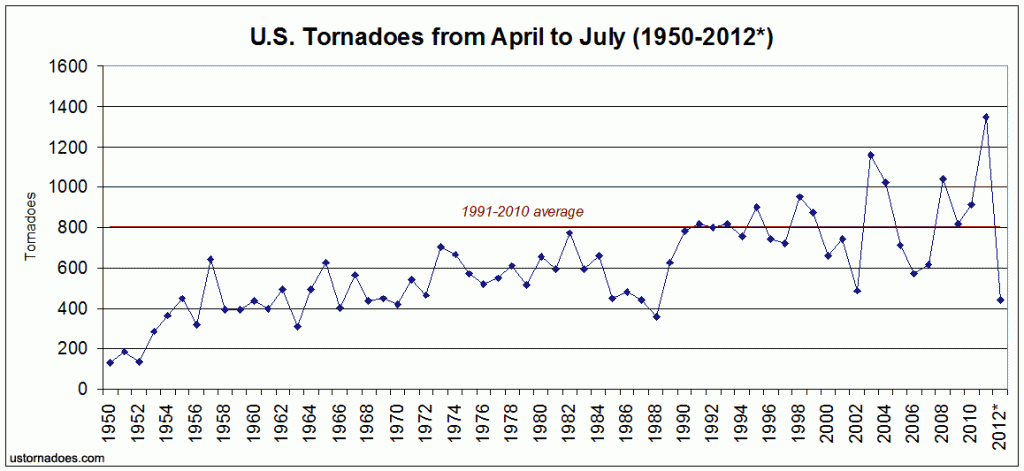
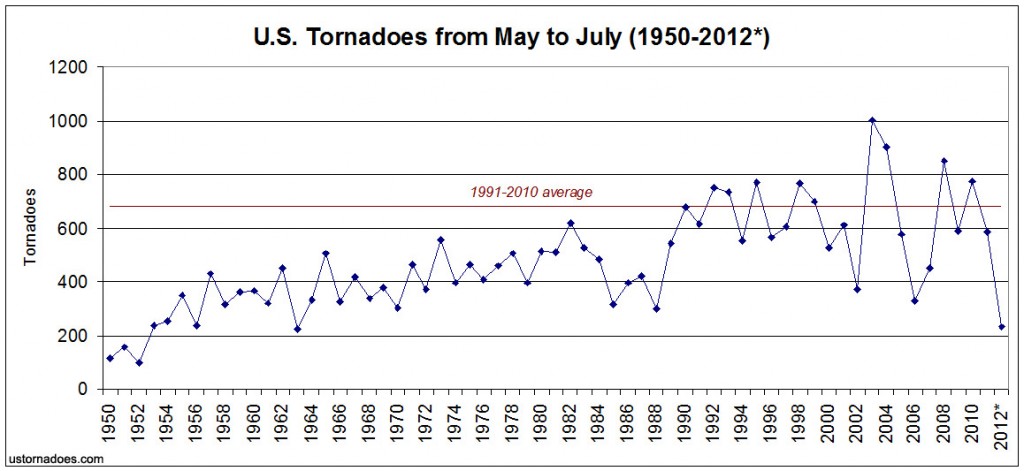
The only years that are recent (back to the 1980s) which have totals within a range of 100 tornadoes for the April-July period are 2002 with 486, 1988 with 356, 1987 with 441, 1986 with 479 and 1985 with 449.
Since implementation of Doppler radar across the country during the 1990s, 2012’s numbers from April-July should fall well below all other years, with 2002 coming the closest to matching this year’s piddly tornado count. This distinction, though extremely limiting the number of years in the set, is important because it’s about where we started to record a vast majority of all tornadoes that happen.
It is likely some tornadoes are still missed, possibly a number in places we don’t usually think to look, like the mountains.
Why the dearth of tornadoes?
I’m sure you’ve heard something about the intense heat and drought over much of the country. An early retreat north of the jet stream accompanied by increasingly intense high-pressure ridging over the central United States effectively shut down large parts of the typical season.
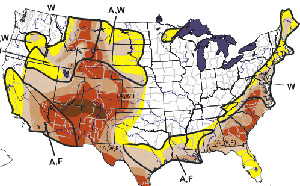
If we look at 1988 or 2002, other tornado-lacking seasons of recent, we see clear similarities of large and widespread droughts stretched across much of the country, with an emphasis on the inter-mountain west and into the Plains. Places you might otherwise expect storms to be passing and helping create tornadoes.
Looking forward, it’s hard to say too much about this pause in tornadoes. If dry times were to continue and a similar pattern (perhaps through feedback mechanisms) established, it could very well roll into another year given the severity of the drought. However, from 2002 to 2003 we saw a very steep increase in tornado activity following a transition to El Nino as is currently underway.
In this case, the United States’ loss might be at least partly Canada’s gain. The tornado season in Canada’s prairies of Saskatchewan started early and has featured a large number of threats. It currently appears as if this year is on track to be one of the worst for tornadoes in that province.
Related: Summertime, and the twisters are missin’
This is a cursory first look at how the April-July 2012 period finished. All figures presented in this post for 2012 are preliminary though believed to be in close proximity to what will be final. It is possible we’ll return to this topic as numbers are finalized.
Latest posts by Ian Livingston (see all)
- Top tornado videos of 2023 - January 1, 2024
- March 31, 2023 tornado outbreak videos - March 31, 2023
- Top tornado videos of 2022 - December 31, 2022

